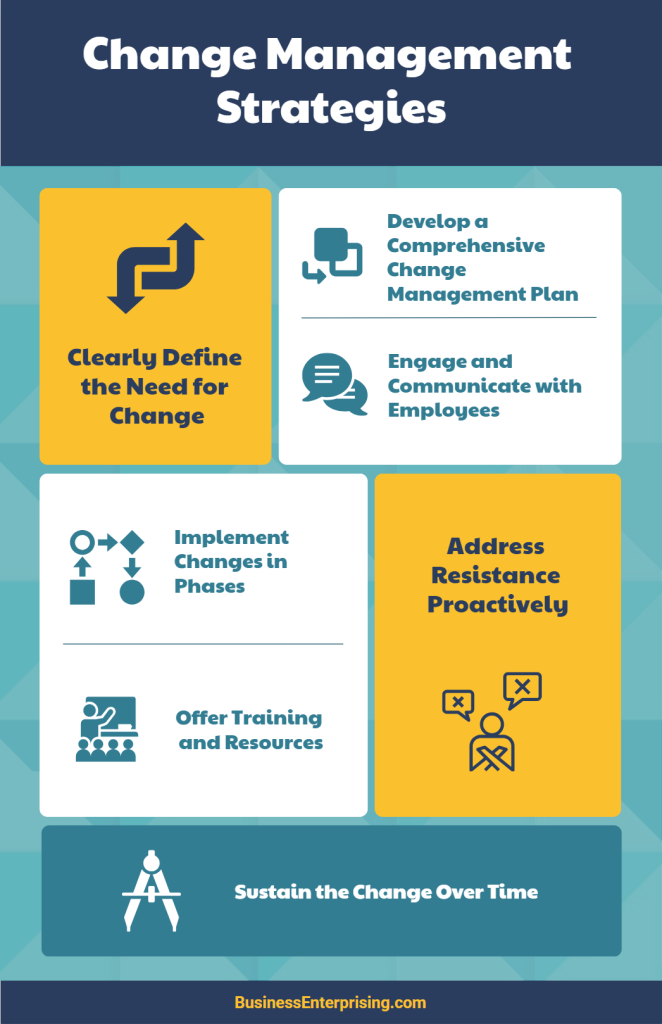
Additionally, addressing resistance and fostering open communication play essential roles in achieving success. Employees are more likely to support change when they understand its purpose and impact. Regular evaluation and adjustments further ensure that your efforts remain on track and deliver meaningful results.
Change presents opportunities for growth and improvement. By applying strategies for effective change management, you create a structured approach to tackle challenges and achieve long-term success. With the right focus and commitment, your organization can adapt and thrive in an evolving environment.
Understanding the Need for Change
Understanding the need for change is the first step in creating effective strategies for effective change management. Identifying areas requiring improvement begins with evaluating current processes and pinpointing inefficiencies. Additionally, gathering feedback from employees and customers can provide valuable insights into where changes are necessary. However, this step requires careful analysis to separate symptoms from root causes.
Aligning change with business goals is essential to achieve meaningful results. Clearly defining your objectives helps you prioritize efforts and maintain focus. For example, if your goal is to improve customer satisfaction, examine how changes in operations or communication could address this. Additionally, ensuring alignment prevents unnecessary disruptions and keeps everyone working toward shared outcomes.
Regularly monitoring industry trends and competitor actions can also reveal opportunities for change. However, it’s important to adapt these insights to your unique business needs. By staying proactive and aligning change initiatives with long-term goals, you create a foundation for sustainable success. This approach not only improves efficiency but also ensures your changes support broader organizational growth.
Communicating the Vision and Goals
Communicating the vision and goals is a cornerstone of strategies for effective change management. Clear communication helps employees understand the purpose behind the change. Additionally, it allows them to see how their roles contribute to achieving the broader objectives. Without transparent communication, uncertainty and resistance can slow progress.
However, gaining employee buy-in requires more than just sharing information. You need to explain why the change is necessary and how it aligns with the company’s goals. Additionally, addressing potential concerns openly fosters trust and encourages collaboration. When employees feel informed and valued, they are more likely to embrace the changes.
Two-way communication plays a critical role in reducing resistance. Encouraging feedback gives employees a voice in the process and helps identify potential roadblocks early. Additionally, regular updates on progress keep everyone aligned and motivated. By creating a culture of open communication, you set the stage for a smoother transition and long-term success.
Transparent communication strengthens your team’s commitment to the change initiative. When your vision is clearly defined and consistently communicated, you build the trust needed to overcome challenges. These strategies for effective change management create a unified effort, making your goals more attainable.
Building a Change Management Team
Building a change management team is essential for driving successful transformation within your organization. Leadership plays a key role in setting the tone for change and providing a clear vision. Additionally, leaders act as champions for the initiative, reinforcing its importance and motivating employees to stay engaged. Without strong leadership, change efforts can lack direction and momentum.
Dedicated teams further support the process by managing the day-to-day aspects of change implementation. These teams act as a bridge between leadership and employees, ensuring clear communication and addressing concerns promptly. Additionally, they monitor progress and identify potential challenges, making adjustments as needed. By focusing on both strategy and execution, the team ensures that the change initiative stays on track.
Collaboration within the change management team strengthens its effectiveness. Including representatives from different departments allows you to address various perspectives and build broad support. Additionally, team members with strong interpersonal and problem-solving skills can help diffuse resistance and foster trust. This approach ensures your team is equipped to handle the complexities of organizational change.
A well-structured team is a cornerstone of strategies for effective change management. By combining strong leadership with a dedicated team, you create a cohesive effort that supports long-term success. This structure helps align your organization, making change smoother and more impactful.
Implementing a Phased Approach
Implementing a phased approach is a practical way to manage change effectively. Rolling out changes gradually allows you to test strategies on a smaller scale. Additionally, this approach helps you identify potential issues early and make adjustments before full implementation. By reducing the risks associated with large-scale change, you can improve overall outcomes.
Phased implementation provides an opportunity to gather feedback from employees during each stage. This feedback helps refine the process and ensures the change aligns with your organization’s needs. Additionally, smaller, manageable steps reduce resistance by allowing employees to adapt gradually. When changes are introduced incrementally, they feel less overwhelming and easier to embrace.
Another benefit of a phased approach is its flexibility. If a particular strategy does not deliver the desired results, you can pivot without affecting the entire organization. Additionally, this method allows you to allocate resources efficiently and avoid unnecessary disruptions. By maintaining control over the pace of change, you can respond to challenges with confidence.
Rolling out changes step by step supports long-term success and builds trust within your team. These strategies for effective change management enable you to adapt while maintaining stability. With a phased approach, you can implement meaningful changes that align with your goals and benefit your organization.
Overcoming Resistance to Change
Overcoming resistance to change is a key component of strategies for effective change management. Resistance often stems from fear of the unknown or concerns about how changes will affect daily tasks. However, addressing these concerns directly can build trust and encourage collaboration. Clear communication and transparency are essential for easing doubts and gaining employee support.
Listening to employee feedback plays a significant role in reducing resistance. Providing opportunities for open dialogue allows you to understand their concerns and respond with practical solutions. Additionally, involving employees in the planning process helps them feel valued and invested in the outcome. When team members see that their input matters, they are more likely to embrace the changes.
Creating a supportive environment fosters a culture that welcomes transformation. Offering training and resources helps employees adapt to new processes or technologies more confidently. Additionally, recognizing and rewarding their efforts during the transition builds morale and reinforces positive behaviors. By focusing on support and encouragement, you create a stronger foundation for change.
Resistance to change is natural, but it can be managed effectively with the right approach. These strategies for effective change management help you address concerns while promoting a positive and collaborative culture. By focusing on communication and support, you can turn resistance into an opportunity for growth.
Evaluating and Sustaining the Change
Evaluating and sustaining the change is essential to ensure long-term success. Monitoring progress allows you to track how well changes are implemented. Additionally, regularly reviewing performance metrics helps identify areas that may need further adjustment. Without consistent evaluation, it is difficult to measure the true impact of your efforts.
Defining clear success metrics is key to understanding whether your strategies for effective change management are working. Metrics like productivity, employee engagement, or customer satisfaction can provide valuable insights. Additionally, gathering feedback from employees and stakeholders allows you to address any lingering issues. Regular updates keep everyone informed and aligned with the goals.
Maintaining improvements over time requires a focus on reinforcement and continuous learning. Providing follow-up training ensures that employees are confident with new systems or processes. Additionally, celebrating milestones and recognizing team contributions helps sustain momentum. When improvements are embedded into daily operations, they are more likely to last.
By evaluating progress and supporting ongoing improvements, you create a foundation for lasting change. These strategies for effective change management enable you to adapt and refine your approach as needed. A commitment to monitoring and sustaining changes ensures your organization remains agile and successful.
Conclusion
Implementing strategies for effective change management requires a thoughtful approach and ongoing effort. Each step, from identifying needs to sustaining improvements, plays a vital role. However, success depends on clear communication, proactive planning, and collaboration. By addressing resistance and fostering a supportive culture, you can guide your organization through change with confidence.
Additionally, regular evaluation helps you track progress and adjust as needed. This process ensures that changes align with your goals and deliver meaningful results. When you monitor and reinforce improvements, you build a foundation for long-term success. Maintaining focus and adaptability allows your organization to thrive in an evolving environment.
Change is an opportunity to grow and improve. With the right strategies for effective change management, you can navigate challenges and achieve positive transformation. A commitment to planning, communication, and evaluation makes lasting success attainable for your business and team.



